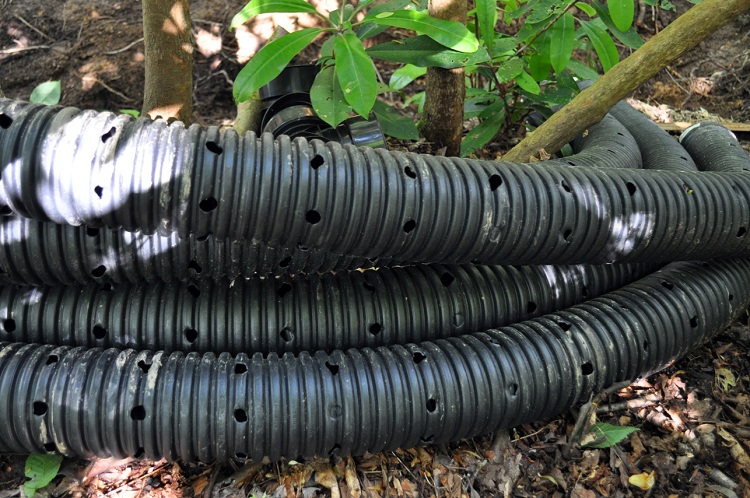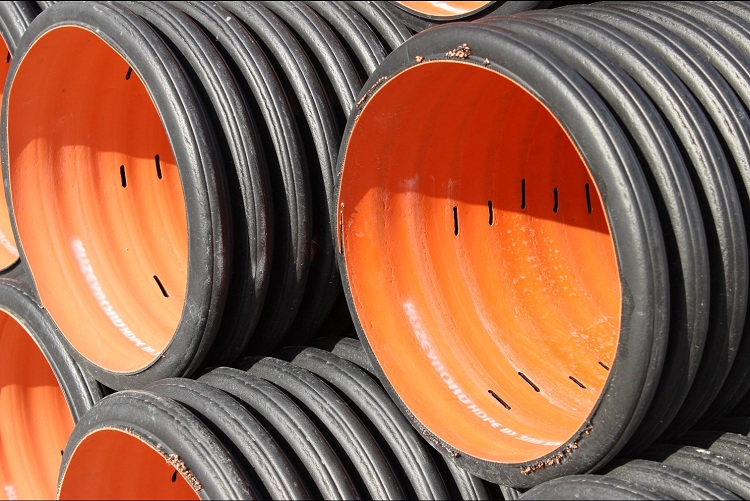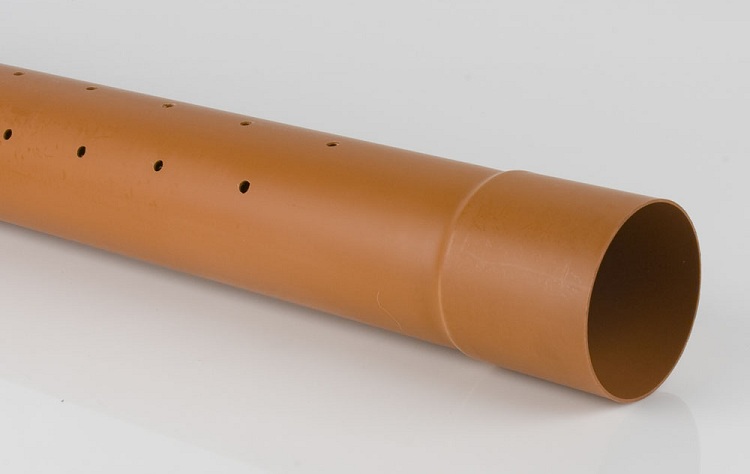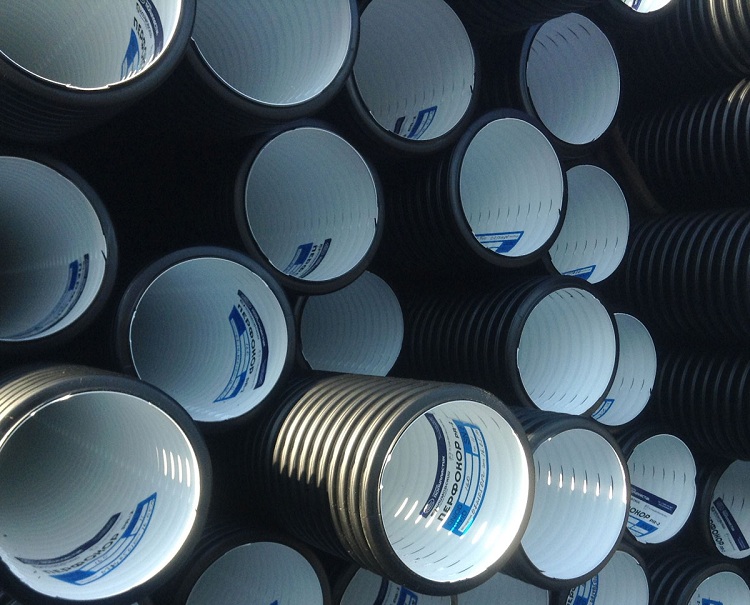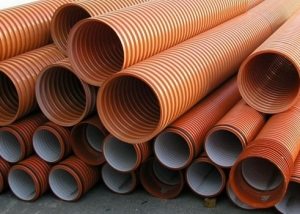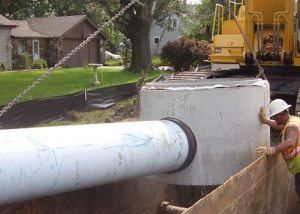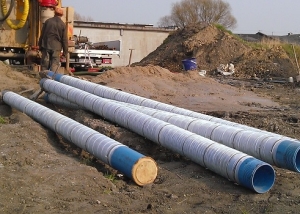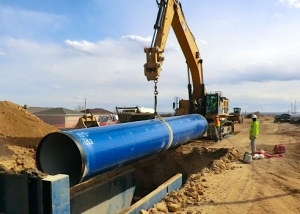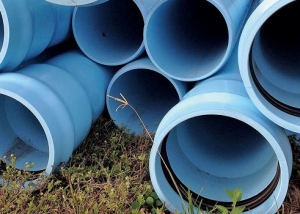Perforated drainage pipes are the main functional element in the installation of an effective drainage system. Removing excess moisture by draining the land is an important part in the arrangement of the territory. Oversaturated with moisture, the earth changes its properties, eventually destroys the foundations of buildings, violates the ecological balance in the district. To eliminate such a significant drawback, drainage works are carried out in the required territory. Their modern basis is the use of special pipes to equip the drainage system, which reduces or minimizes the balance of groundwater.
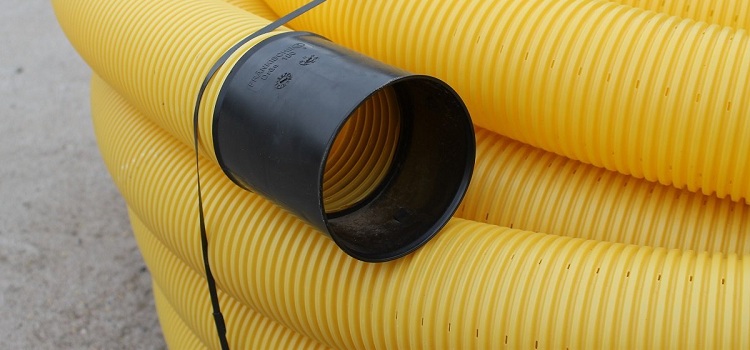
Pipes for arranging the drainage system must have openings, and today you can purchase products with ready-made perforations
Content
Drainage systems. Their purpose and work
Drainage is a whole complex of measures, including the study of this site, the design of ditches for laying pipes, their proper incorporation into the soil. The intricacies of arranging drainage systems include knowledge of soils, arrangement of filter layers, proper installation of products such as perforated drainage pipes.
As you know, the basis of building structures is their reliable foundation. The durability and well-being of any structure depends on it. The foundation for the building foundation is soil. Only strong, not oversaturated with moisture, soil can be a reliable support for any building. The drainage of the land where construction work will be carried out is an important event, the implementation of which largely determines the successful start of all work. The installation of a water drainage system with the installation of modern drainage pipes always contributes to the quality of such work, ensuring success.
There are several ways to drain your device:
- deep drainage, where perforated pipes are used, which are designed to remove groundwater;
- An open surface, relatively simple version of the drainage system designed to remove wastewater that accumulates during rain and snowfall.
Types of drainage pipes. Their properties, classification
The main type of work in the construction of the drainage system is the correct installation of the pipeline. Supporting work includes the implementation of necessary measures for the installation of a technically and technologically correctly designed drainage system.
During the construction of the drainage pipes are used:
- without perforation, which perform the removal of earth moisture and rainfall;
- with perforation, which allows not only to drain, but also to collect moisture from the site and transport it;
- with perforation and an installed filter, which protects the pipeline from clogging holes with dirt.
Note! The use of pipes without a filter requires a filter layer, by filling the pipe with gravel of different fractions.
The use of an industrial filter, which, for example, is geotextile or other materials that are not susceptible to rapid decomposition, is preferable in terms of the quality of the operational properties of such a pipe.
In the process of manufacturing drainage pipes, advanced technical and technological innovations and materials are used. The main difference between a drainage pipe and a conventional stormwater pipe is the presence of perforation through which excess groundwater is collected in the pipeline and, thanks to the slope, flows into prefabricated wells, and then removed outside the site. The main types of pipes that are used in drainage systems are as follows:
- Pipes made of asbestos cement, manufactured by the industry for many years and operated in a wide variety of conditions.
- Pipes made of ceramics, which are characterized by increased mechanical strength, durability, but quite high in cost.
- Polymer pipes of various modifications: modern, widely used, economical, beneficial in installation and operation.
Asbestos-cement pipes are products of the past generation. They are environmentally unsafe, heavy, requiring physical effort during the organization of work, the use of special equipment. The same applies to ceramic products. Often, drainage holes are made at the place of installation, there is no necessary quality of pipeline preparation. All this predetermines increased costs of time and money, which does not suit customers.
Plastic systems have great advantages and promise. We list the main advantages of such products:
- long period of operation, lack of moisture influence on the structure of the pipe material;
- have excellent strength characteristics, due to their structural abilities to carry and withstand mechanical stress;
- light weight of products, which contributes to quick installation, facilitates pipe delivery;
- polymer pipes have good price performance with appropriate product quality;
- simple and reliable in operation, for many years do not require maintenance and revision;
- A large assortment of products such as perforated pipes for drainage of various diameters equipped with specialized connecting and sealing elements is manufactured.
Perforated plastic pipe. Its advantages and application
Plastic pipes are used almost everywhere. This also applies to drainage systems, based on which polymer products are effectively involved. Easy to use, effective in operation, they quickly proved their indisputable advantage. The industry produces many types of polymer tubular products, according to established standards. They are made from different polymer compositions: from polyvinyl chloride, high and low pressure polyethylene, polypropylene.
Drain pipes made of polyvinyl chloride (PVC) are made in the following versions:
- single and double layer products;
- rigid and flexible pipes;
- pipes equipped with filter material;
- pipes without filter elements.
Rigid pipes are produced by cuts in lengths of 6 meters and 12 meters. Flexible, relatively small diameters are packed in bays of approximately 50 meters, depending on the diameter.
Important! It should be noted that drainage pipes are manufactured in accordance with strength classes SN2 to SN16. Products are used depending on the ability to withstand specified loads and its purpose.
Polypropylene pipes can have a flat, smooth surface or corrugated, with stiffeners, depending on the functional purpose. Typically, such a pipe is made with a diameter of 50 mm, with a rather high strength class - SN8.
LDPE and HDPE pipes are widespread in drainage systems. They are low cost, efficient in installation and operation. The following varieties can be distinguished:
- a simple single-layer pipe with perforation or without drainage holes used in surface bedding systems;
- polyethylene pipe, with corrugated stiffeners on the outside and smooth-bodied inside, with an increased stiffness class, which allows it to be deepened to 4 meters;
- the same in execution, but with a higher strength class for use at a depth of up to 10 meters;
- double-layer pipes made of low-pressure polyethylene, corrugated, with a high stiffness class for deep bedding.
Another one of the high performance types corrugated drainage pipe - This is a plastic pipe Perfokor. For its manufacture, mineral components are used. This composite creates a high strength product, which contributes to its use in a variety of options for the construction of a drainage system. Type of pipe - two-layer, perforated in the following versions:
- has perforations along the entire length and works mainly in deep systems;
- perforations are located along the top of the pipe and is used to collect and remove water from the surface of the site.
Such pipes are produced as a measured length of 6 meters and 12 meters, and in rolls. Typical diameters of such pipes are 110 mm, 160 mm, 200 mm. Typically, such pipelines are equipped with a geofilter.
Technological features of the installation of the drainage pipeline
Installation of drainage involves the excavation of digging trenches into which drainage pipes will be laid. The depth and location of the trenches depends on the water saturation of the soil and the geodesy of the site itself. Pipes are being prepared, equipped with their connecting elements, accessories, filter cloth, and other necessary accessories.
As a rule, a perforated pipeline is laid on a sand cushion. Then the filling of the pipes with crushed stone, which plays the role of a filter, is performed. As an additional filter element, a filter cloth or other means is used to provide filtering of effluents. Then fill with sand mixture and close the trenches with ordinary soil.
In places where the system changes the laying direction, inspection wells are arranged to control the operation of the drainage system. In the place that is located lowest in the territory where construction work is underway on the installation of a drainage system, a well is installed to collect water.
Note! Wells are arranged in direct sections of the drainage system, approximately every 50-60 meters.
Installation of drainage pipes creates a kind of network of capillaries that direct moisture to its collection point. Using modern polymer perforated pipes and auxiliary materials, such drainage can be performed independently. To carry out work on large areas, as well as in places of a large excess of moisture, design work is carried out that involves the development of a drainage system plan, regulates the use of the appropriate type of pipes, methods of filtration and moisture removal.
